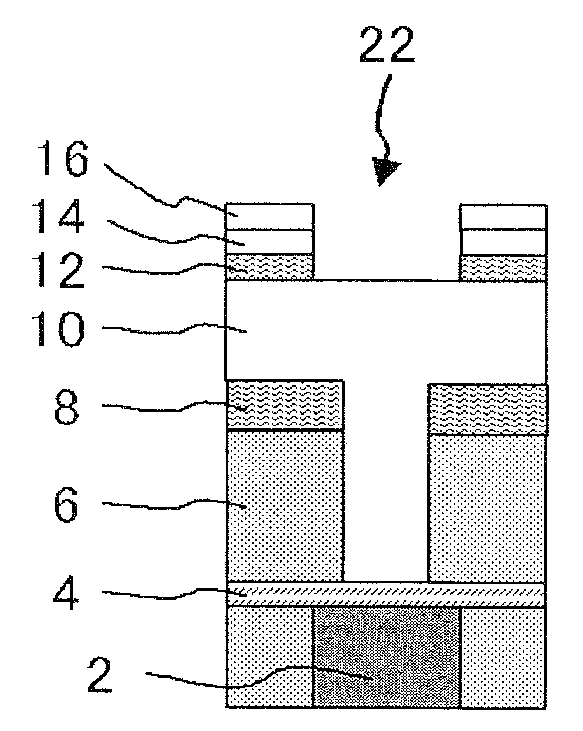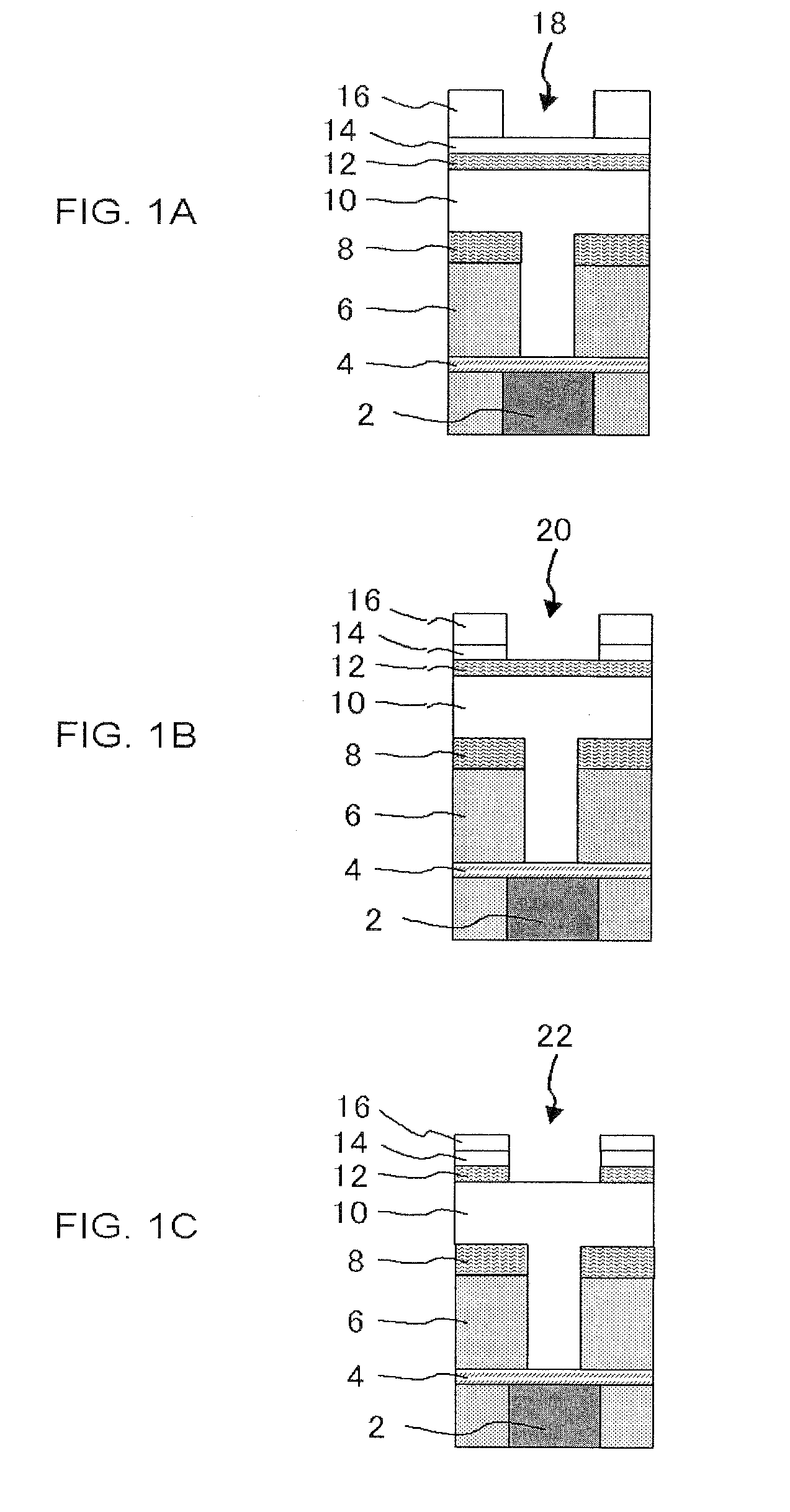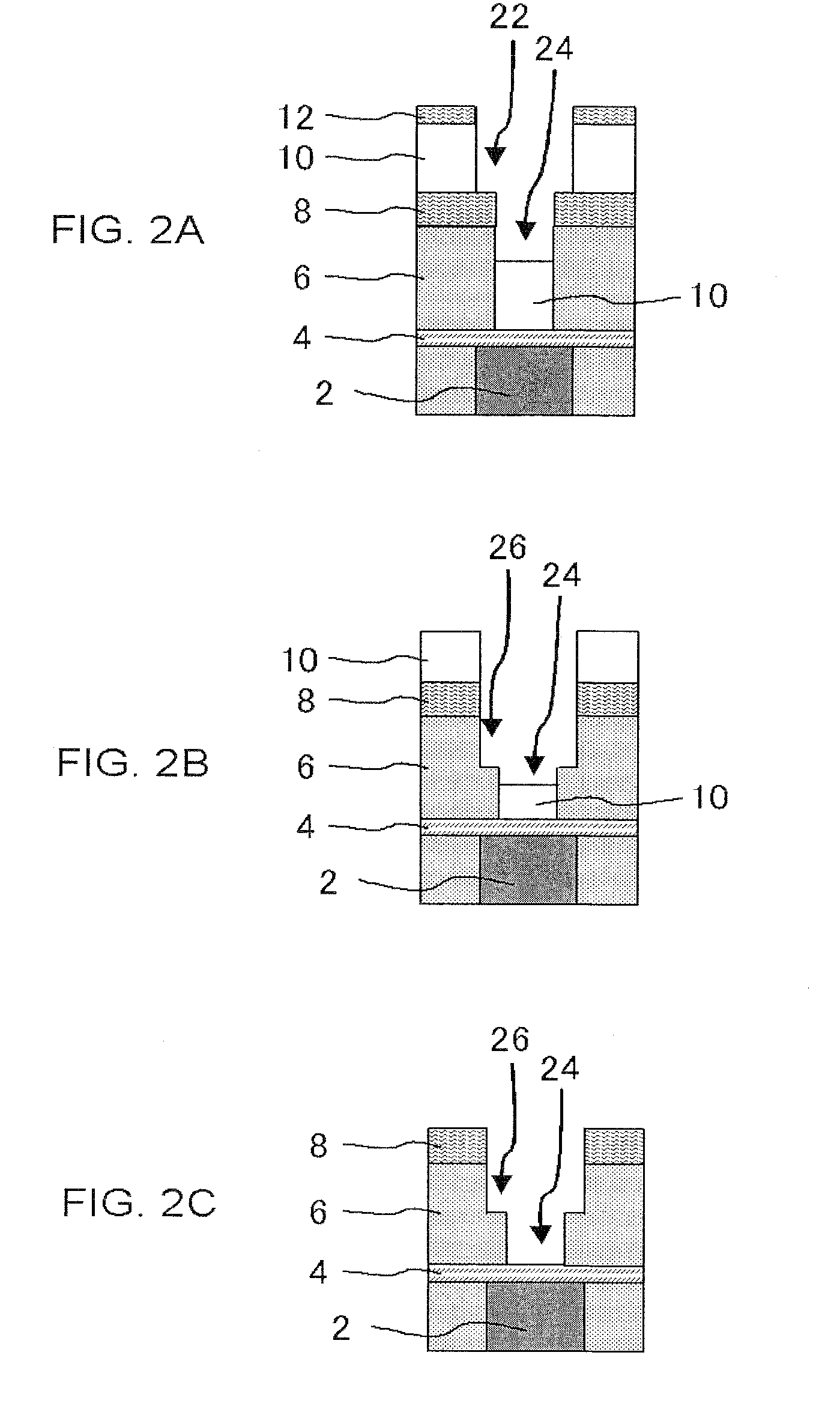Method of manufacturing a semiconductor device
a manufacturing method and semiconductor technology, applied in semiconductor/solid-state device manufacturing, basic electric elements, electric devices, etc., can solve the problems of inability to remove the deposit using cleaning gas, low production efficiency, and high so as to improve the productivity of the semiconductor device, reduce the cost of organic materials, and reduce the effect of etching depth
- Summary
- Abstract
- Description
- Claims
- Application Information
AI Technical Summary
Benefits of technology
Problems solved by technology
Method used
Image
Examples
example
[0079]Etching was performed according to the all-in-one etching method described in FIGS. 1A to 3B under the following conditions according to the following testing method.
[0080]Step (1): Only an Si substrate was mounted in a chamber of an etching equipment, and plasma generation of etching gas described in FIG. 5 was performed.
[0081]Step (2): The Si substrate used at the above-described step (1) was taken out, and the substrate with a stacked film was etched under the following conditions according to the etching steps described in FIGS. 1A to 3B. Steps to an ashing step for a resist film 10 were completed, and there was confirmed a difference in etching depth for an interlayer film 6 (SiOCH film) between in the center portion (denoted by “Cntr” in FIG. 5) and in the outer edge (at a position 4 mm inward from the outside edge (denoted by “4 mm” in FIG. 5)) of the wafer. Here, the tests were conducted in a portion in which a via hole like the via hole shown in FIG. 1A was not provid...
PUM
 Login to View More
Login to View More Abstract
Description
Claims
Application Information
 Login to View More
Login to View More - R&D
- Intellectual Property
- Life Sciences
- Materials
- Tech Scout
- Unparalleled Data Quality
- Higher Quality Content
- 60% Fewer Hallucinations
Browse by: Latest US Patents, China's latest patents, Technical Efficacy Thesaurus, Application Domain, Technology Topic, Popular Technical Reports.
© 2025 PatSnap. All rights reserved.Legal|Privacy policy|Modern Slavery Act Transparency Statement|Sitemap|About US| Contact US: help@patsnap.com



